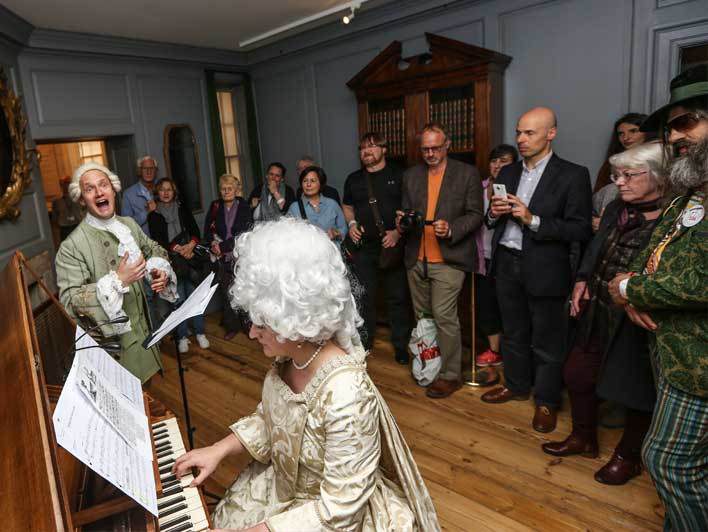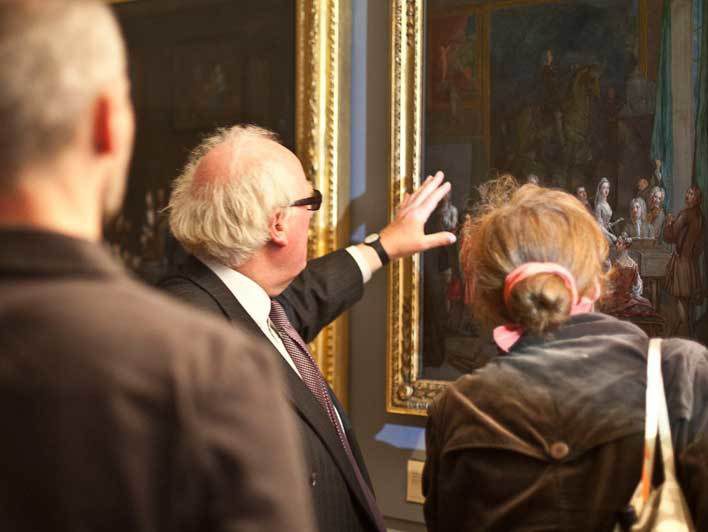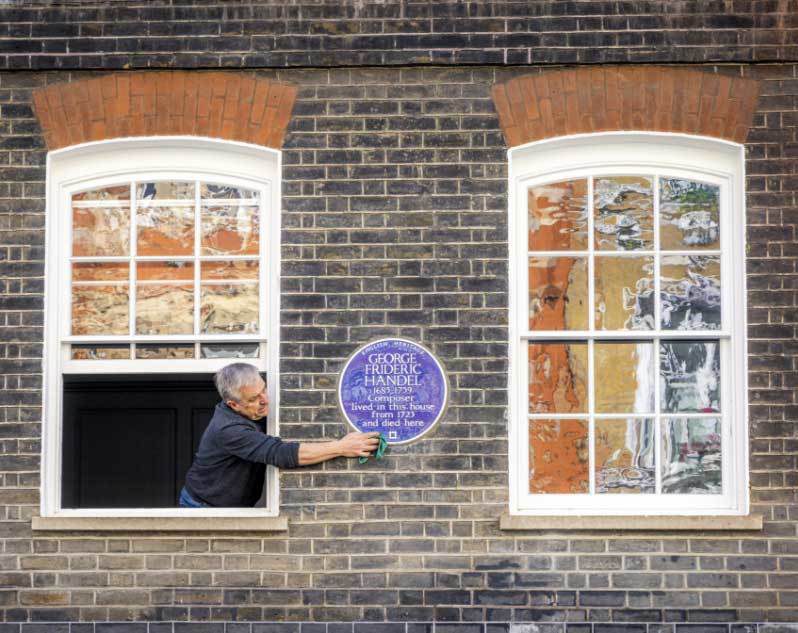TESEO (HWV 9)
Libretto: Nicolas Haym, after Philippe Quinault
First performance: 10th January 1713, Queen's Theatre, London
Cast
- Valeriano Pellegrini (Soprano castrato)
- Margehrita de l'Epine (Soprano)
- Elisabetta Pilotti-Schiavonetti (Soprano)
- Valentino Urbani (Alto castrato)
- Maria Gallia (Soprano)
- Jane Barbier (Contralto)
- Richard Leveridge (Bass)
Synopsis

Act I
The opera begins with a “warlike symphony” and the sound of an offstage battle in which a foreign prince, Teseo, is fighting on behalf of King Egeo of Athens. (Teseo is in fact Egeo’s son, who was sent away to Troezen as a child but has now returned to the Athenian court in disguise.)
Agilea loves Teseo and tells her confidante, Clizia, of her fears concerning the hero’s fate following his departure for battle as commander-in-chief of the Athenian armies
Arcane loves Clizia, who promises him that she will soon reward him for his constancy, but her request that he find out what has become of Teseo arouses Arcane’s jealousy.
The outcome of the battle proves propitious to the Athenians. King Egeo, who had previously promised to marry the sorceress Medea, announces that Agilea shall become his queen instead. Left alone, Agilea in her despair, reveals her love for Teseo and declares her contempt for a royal destiny.

Act II
In the palace, Medea bewails her misfortune: it is the god of love who forever robs her of her peace of mind. Egeo enters with his retinue. He tells Medea that, having long deferred the day of their marriage, he has now decided to marry her off to his son. Medea, who is well aware of the reasons for Egeo’s change of heart, is unimpressed. If he will not marry her, only Teseo is worthy of her, she claims.
Arcane warns the king to beware of Teseo who, decked with military glory, might well begrudge him his throne. The victorious hero prepares for an audience with his sovereign. Medea puts him on his guard: Egeo, she tells him, suspects him of treachery; she alone can pacify the king. Teseo places himself in the hands of the sorceress who, left alone, sings of her jealousy and hatred.

Act III
Arcane intends to ask the king for Clizia’s hand in marriage. Agilea’s servant informs her mistress of Teseo’s imminent arrival. The hero enters and sings of his happiness at being reunited with his beloved. But hard on his heels comes Arcane with news of the king: Agilea and Teseo are shortly to be married. Abruptly Medea bursts in and threatens the young woman, muttering incantations and transforming the stage into a terrible wilderness peopled only by ferocious monsters which proceed to abduct Agilea.

Act IV
Arcane informs the king of Medea’s magic spells. Egeo swears vengeance. Medea entreats the young woman to marry Egeo, but Agilea would rather die than renounce her love. The sorceress then conjures up the sleeping form of Teseo, who enters escorted by ghosts. Medea prefers to condemn the hero to death rather than see him marry her rival. Agilea relents; she will marry the king in order to spare her lover’s life. Medea dismisses her infernal hordes and transforms the stage into an enchanted isle. At a wave of her magic wand, Teseo hears the voice of Agilea telling him that she no longer loves him. But her tears contradict her words. Medea reappears: she has been moved to pity by the touching spectacle of Teseo’s love for Agilea and now decides to put nothing in the way of the happiness of the man she still loves. Teseo and Agilea sing of their bliss together.

Act V
Tormented by jealousy, Medea prepares for vengeance: she has decided to kill Teseo after all and hands Egeo a poisoned cup.
Teseo and Agilea enter accompanied by their wedding train. Egeo invites them to forget their former quarrels and to drink to their new-found concord. Teseo draws his sword and, before raising the chalice to his lips, swears an oath of loyalty to his liege. Dumbfounded, the king recognises the sword he once gave to his son as a token in order to be able to recognise him. Egeo dashes the cup from the hero’s hands and confesses the crime he was on the point of committing. Medea flees. The king seals the union of Teseo and Agilea, and of Clizia and Arcane. Medea appears, one last time, on a chariot drawn by dragons and attempts to set fire to the palace. Only the intervention of Minerva saves the assembled company from the flames. In a final chorus all sing of their new-found harmony.
Synopsis reproduced by kind permission of Warner Classics & Jazz.
Context
Teseo is unique in the Handel opera repertoire for being his only stage work to have a five act structure. This reflects the work’s origins in the French opera tradition, based on a libretto written by Philippe Quinault and set by the great French opera composer Jean-Baptise Lully in 1674. There are considerable stylistic differences between the Italian and French operatic traditions, and Teseo is an attempt (not always successful) to blend these traditions. Although still based on the division of recitative and aria, the ‘exit aria’ central to the Italian style is largely missing, and characters often remain onstage to continue the scene after their big solo numbers. There are also whole sequences of consecutive arias and duets without any intervening recitatives. This is an experiment Handel was not to try again.
Returning to the heroic and spectacular format of Rinaldo after the failure of the gently pastoral Il Pastor Fido, Teseo was a moderate success. But things did not go well with the performances. After the second night the theatre manager, Owen MacSwiney disappeared with the box office takings, leaving composer, musicians and singers unpaid. Colman’s ‘Opera Register’ for 15th January 1713 tells us ‘The Singers were in Some confusion but at last concluded to go on with ye operas on their own accounts, & divide ye Gain amongst them.’ And so the performances proceeded, but not without further incident. On the night of Wednesday 21st January the complicated machinery that controlled the scene changes and Medea’s fiery dragons broke down, causing the cast to post the following notice in the Daily Courant of 24th January: ‘This present Saturday…the Opera of Theseus by Mr. Hendel will be represented in its Perfection, that is to say with all the Scenes, Decorations, Flights, and Machines. The Performers are much concerned that they did not give the Nobility and Gentry all the satisfaction they could have wished, when they represented it on Wednesday, having been hindered by some unforeseen Accidents at that time insurmountable.’
Handel never revived Teseo, and it was not heard again in public until a revival at the Göttingen Festival in 1947. He did, however, maintain an active correspondence with MacSwiney who became one of his chief talent scouts in Italy. It was MacSwiney who made the arrangements for the great Italian soprano Faustina Bordoni to join Handel’s London company in 1726, and he continued to recruit for Handel until 1730.


